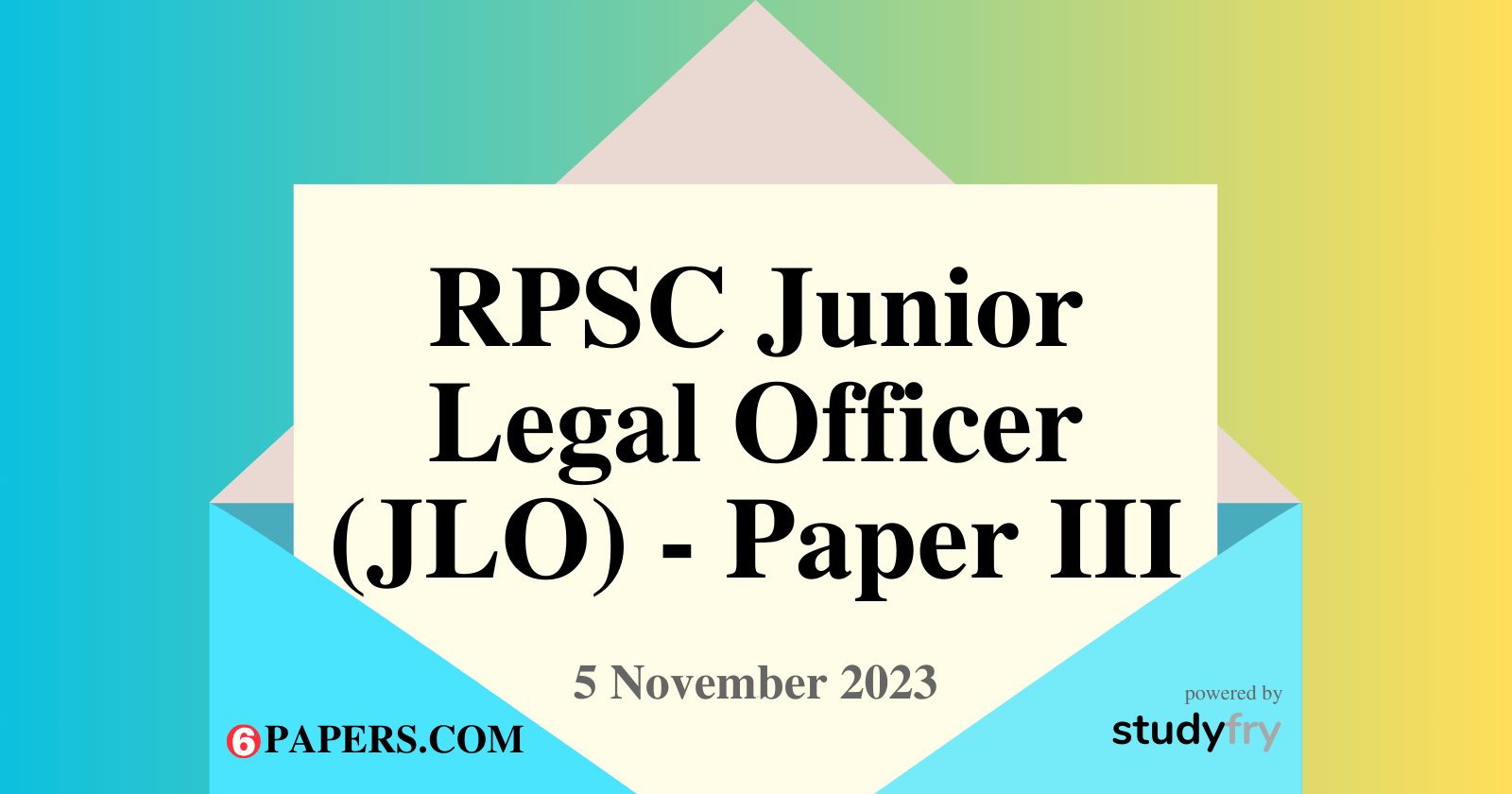131. Identification parades, for the purpose of identifying properties which are subject- matter of an offence or persons concerned in an offence, are relevant, under which provision of Indian Evidence Act?
(1) None of these
(2) Section 151
(3) Section 9
(4) Section 8
(5) Question not attempted
Show Answer
Hide Answer
132. Under which provision of Indian Evidence Act, facts necessary to explain or introduce relevant facts are relevant?
(1) Section 7
(2) Section 151
(3) Section 9
(4) Section 8
(5) Question not attempted
Show Answer
Hide Answer
133. Which section of the Evidence Act lays down that things said or done by conspirators in reference to ‘common design’ is a relevant fact?
(1) Section 11
(2) Section 10
(3) Section 9
(4) Section 8
(5) Question not attempted
Show Answer
Hide Answer
134. The question is whether A committed a crime at Calcutta on a certain day?
The fact that, on that day, A was at Lahore is relevant, under which provision of Indian Evidence Act?
(1) None of these
(2) Section 21
(3) Section 11
(4) Section 6
(5) Question not attempted
Show Answer
Hide Answer
135. Under which provision of Indian Evidence Act, ‘plea of alibi’ is relevant?
(1) Section 27
(2) Section 25
(3) Section 11
(4) Section 10
(5) Question not attempted
Show Answer
Hide Answer
136. A is tried for murder of B by poison. Under which provision of Indian Evidence Act, the fact that before the death of B, A procured poison similar to that which was administered to B, is relevant?
(1) None of these
(2) Section 8
(3) Section 7
(4) Section 6
(5) Question not attempted
Show Answer
Hide Answer
137. Assertion (A): A is tried for the murder of B by intentionally shooting him dead.
Explanation (E): The fact that A was in habit of shooting at people with intent to murder them, is relevant.
(1) (A) is false, but (E) is true.
(2) (A) is true, but (E) is false.
(3) Both (A) and (E) are individually true and (E) is not the correct explanation of (A).
(4) Both (A) and (E) are individually true and (E) is the correct explanation of (A).
(5) Question not attempted
Show Answer
Hide Answer
138. A sues B for negligence in providing him with a carriage for hire not reasonably fit for use, whereby A was injured.
1. The fact that B’s attention was drawn on other occasion to the defect of that carriage is relevant. particular
2. The fact that B was habitually negligent about the carriages which he let to hire, is relevant.
Select the correct answer using the codes given below:
Codes:
(1) None of these
(2) 1 and 2
(3) 2
(4) 1
(5) Question not attempted
Show Answer
Hide Answer
139. A sues B for damage done by a dog of B’s, which he knew to be ferocious.
The fact fact that that the dog had previously bitten X, Y and Z and that they had made complaints to B, are relevant under which section of Indian Evidence Act?
(1) Section 14
(2) Section 11
(3) Section 7
(4) Section 6
(5) Question not attempted
Show Answer
Hide Answer
140. Admission is a statement which suggests any inference as to any fact in issue or relevant fact, and which is made by any of the persons and under the circumstances, mentioned under Indian Evidence Act, can be
1. Oral
2. Documentary
3. In Electronic form
Select the correct answer using the codes given below:
Codes:
(1) 1, 2, 3
(2) 1,3
(3) 2,3
(4) 1, 2
(5) Question not attempted
Show Answer
Hide Answer


Leave a Reply